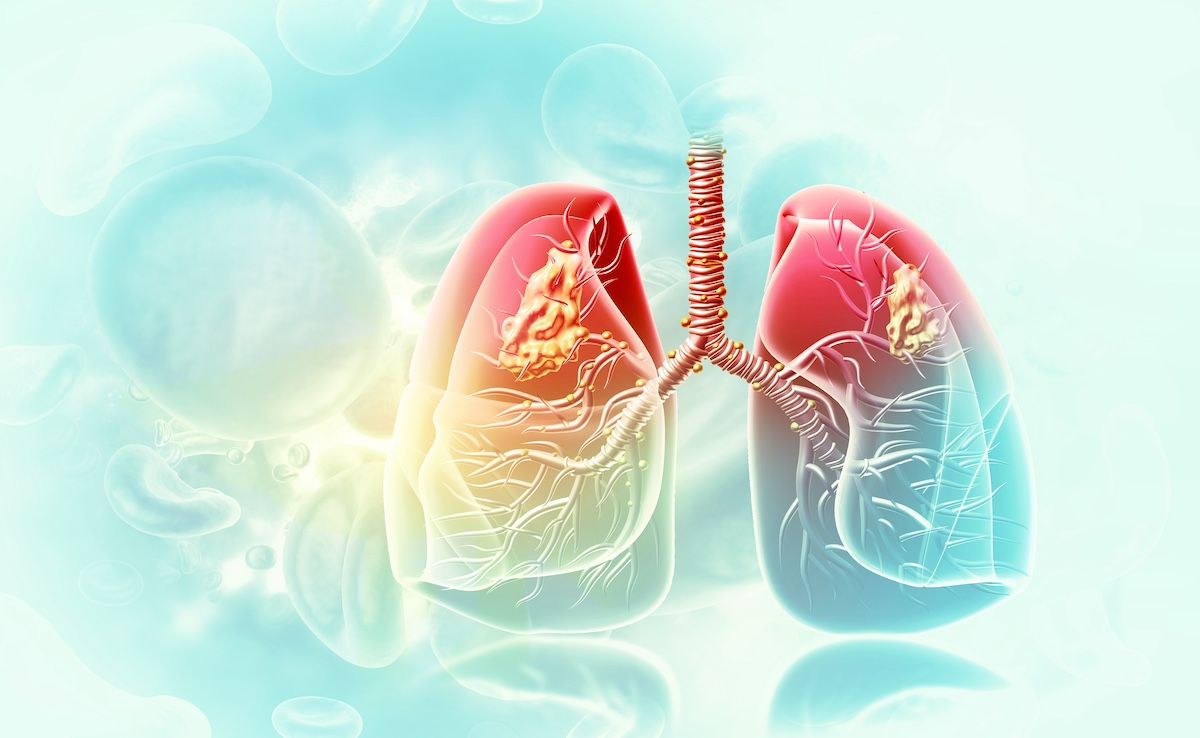Article
Meta-Analysis Points to Beneficial Role of Dexamethasone Pretreatment in NSCLC
Author(s):
A meta-analysis on first-line treatment for non–small cell lung cancer (NSCLC) in clinical trials revealed that inclusion of dexamethasone along side chemotherapy and PD-L1 inhibitors yielded benefits in this patient population.
A recent network-analysis of randomized clinical trials found the combination treatment of chemotherapy plus PD-L1 inhibitors plus dexamethasone pretreatment (I+C+D) is the most effective first-line treatment approach among patients with non–small cell lung cancer (NSCLC) treated with chemotherapy plus PD-L1 inhibitors (I+C) PD-L1 inhibitors (I), or chemotherapy alone (C). Findings were published in the American Journal of Clinical and Experimental Immunology.
Previously, no unanimous conclusion existed regarding the effects of steroids on the efficacy of immunotherapy drugs in NSCLC, the authors wrote, despite recommendations from the National Comprehensive Cancer Network and the American Society of Clinical Oncology to administer dexamethasone to these patients to treat nausea and vomiting during radiotherapy and chemotherapy.
To better elucidate the effects of pretreatment with dexamethasone on efficacy and immune-related adverse events (irAEs) in patients with NSCLC, researchers compared outcomes of those who received I+C+D; I+C; and PD1 inhibitors alone (I).
Eligible studies were gleaned from PubMed, Web of Science, MEDLINE, and the Cochrane Library and from abstracts presented at recent oncology conferences reported before November 30, 2020.
In addition, “grade of irAEs was determined based on the Common Terminology Criteria for Adverse Events (version 4.0) of the National Cancer Institute,” authors wrote. Primary outcomes included pooled irAE rates, indirect relative risks, progression-free survival (PFS), and overall survival (OS) with I+C+D versus I.
A total of 12 phase 3 international multicenter trials investigating PD-L1 inhibitors, chemotherapy, or their combination for the first-line treatment of advanced NSCLC were included in final analyses, which included data on 7115 patients.
A network meta-analysis generated 15 comparisons, revealing:
- Use of I+C+D meant a statistically significant improvement in PFS (hazard ratio [HR]: 0.50; 95% CI, 0.37-0.72)
- Combination therapy of I+C+D showed a statistically significant (HR: 0.66; 95% CI, 0.32-1.30) OS advantage over I+C (HR: 0.72; 95% CI, 0.46-1.10) or I (HR: 0.79; 95% CI, 0.30-2.1)
- The rate of all-grade irAEs for the I+C+D and I+C regimens was the least parameter in all studies
- I+C was less toxic than I+C+D, although this difference did not reach statistical significance (HR: 1.07; 95% CI, 0.80-1.44)
- Combination therapy of I+C+D did not show increased toxicity in comparison with I+C or I
- Combination therapy of I+C+D or that of I+C exhibited significantly decreased toxicity compared with monotherapy with either agent (I or C): I+C+D versus C (relative risk [RR]: 0.92; 95% CI, 0.56-1.51); I+C versus C (RR: 0.62; 95% CI, 0.37-1.04)
- I+C therapy was superior, with a significantly lower incidence of severe adverse events, to I+C+D (RR: 1.49; 95% CI, 0.97-2.28) and I (RR: 0.46; 95% CI, 0.32-0.66) therapies
- Treatment with I was associated with higher grade 3-5 toxicity than I+C+D (RR: 0.72; 95% CI, 0.65-3.55)
Additional rank probability analyses for irAEs suggested that the combination regimen I+C is the best treatment option (surface under the cumulative ranking [SUCRA]: 66.5%), followed by I+C+D (SUCRA: 59.1%).
Taken together, data indicate “the combination regimen I+C+D might be the most effective and least toxic therapeutic strategy compared with other options,” authors wrote.
PFS data for this treatment combination were predominately collected from Chinese cohorts, limiting generalizability of findings to other populations. Future randomized controlled trials conducted among diverse populations are needed to validate results, researchers said. Limited data on adverse event timing also mark a limitation to current the analysis.
“It should be noted that the rates of irAEs are more likely to be higher for PD1 than for PDL1, in keeping with their combination with chemotherapy. Moreover, the immune-related all-grade and high-grade outcomes were also significant for both nivolumab and pembrolizumab therapies,” authors said.
“The findings in this research suggest that I+C+D is an effective therapeutic strategy for patients with NSCLC, despite its lower tolerability compared with that observed for single agents,” they concluded.
Reference
Li Y, He F, Liu S, et al. Effect of pretreatment with dexamethasone on the efficacy and immune-related adverse events of immunotherapy in first-line treatment for advanced non-small cell lung cancer: a network meta-analysis of randomized control trials. Am J Clin Exp Immunol. Published online December 15, 2021.




